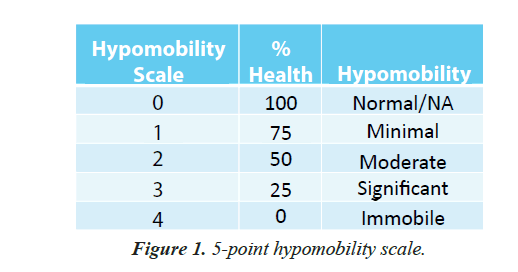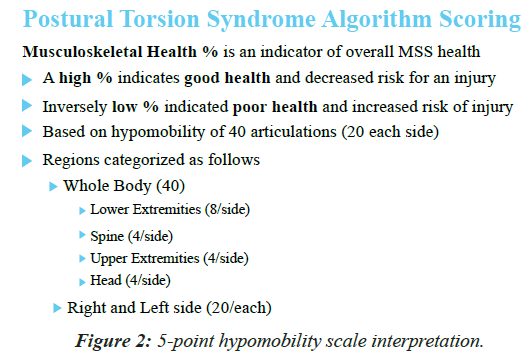Short Communication - Journal of Pain Management and Therapy (2019) Volume 3, Issue 2
Postural Torsion Syndrome Algorithm (ptsa) as a predictor of musculoskeletal health.
Armia Abdo*AZA Health & Wellness LLC California, USA
- *Corresponding Author:
- Armia Abdo
AZA Health & Wellness LLC California
USA
E-mail: aabdo2727@gmail.com
Accepted Date: March 05, 2019
Citation: Abdo A. Postural Torsion Syndrome Algorithm (ptsa) as a predictor of musculoskeletal health. J Pain Manage Ther. 2019;3(1):6-7.
Abstract
Currently in the United States healthcare model, treatment occurs after the patient becomes symptomatic. Waiting until we recognize the problem by patient complaints limits our capacity for quality physical and mental health. With this model, the US spends more on healthcare per capita than every other nation. In Physical Therapy, developing proper preventive healthcare will require screening tools effective in identifying predictors of pain and injury. Our current tools render themselves ineffective, because they only measure function, which is too variable for accurate assessment [1]. Nevertheless, these inadequate tools are the standard practice for determining a need for skilled interventions and insurance coverage.
Keywords
Musculoskeletal, tool, system, movement, dysfunction.
Introduction
Currently in the United States healthcare model, treatment occurs after the patient becomes symptomatic. Waiting until we recognize the problem by patient complaints limits our capacity for quality physical and mental health. With this model, the US spends more on healthcare per capita than every other nation. In Physical Therapy, developing proper preventive healthcare will require screening tools effective in identifying predictors of pain and injury. Our current tools render themselves ineffective, because they only measure function, which is too variable for accurate assessment [1]. Nevertheless, these inadequate tools are the standard practice for determining a need for skilled interventions and insurance coverage.
Musculoskeletal health depends upon the body’s ability to support itself under gravity by way of efficient form. The loss of this efficiency, results in a predictable collapse due to constant gravitational force; thus creating the foundation for Postural Torsion Syndrome Algorithm (PTSA). Gravitational biology dictates, “As a consequence, all biological processes are accustomed to the ever-present force of gravity and even small variations in this force can have significant impact on the health and function of organisms” [2-3]. These disease processes that result from a failure in our Musculoskeletal System (MSS) are not limited to the MSS but will result in a myriad of pathologies affecting all other systems.
PTSA is a musculoskeletal screening tool that uses a 5-point system measuring a specific angle of hypo mobility in twenty key articulations on each side of the body (Figure 1).
These articulations are susceptible to gravitational forces and can collapse when gravities forces exceed their thresholds for sustaining structural integrity. As a result, these articulations are key drivers of posture and movement. Limitations can be measured in a way that reflects the group dysfunction of that region. This measurable dysfunction can be used to predict injury and serve as a guide to justifying preventative care (Figure 2).
Methods
• Subjects complete following information
• Health questionnaire
• Body chart identifying symptomatic regions using pain scale 0-10
• Physical therapy functional outcome tools (LEFS, BI, NI, DASH)
• Subjects are then measured using PTSA.
Results of case studies
• Subjects who present with >70% health did not complain of symptoms in that region
• Subjects who present with <70% health in a region complained of intermittent-chronic musculoskeletal symptoms
• Subjects who present with <50% health in a region presented with dysfunction in other systems of the body and musculoskeletal symptoms where chronic
• Effects of this measuring system have been recorded for several individual case studies. Pilot study currently in progress and will be completed March 2019.
References
- Moran RW, Schneiders AG, Mason J, et al. Do Functional Movement Screen (FMS) composite scores predict subsequent injury? A systematic review with meta-analysis. Br J Sports Med 2017; 51.
- Catling. Astrobiology: A very short introduction (Very Short Introductions) 2014.
- Bizzarri M, Masiello GM, Giuliani A, et al. Gravity constraints drive biological systems toward specific organization patterns. BioEssays 2017; 39.

